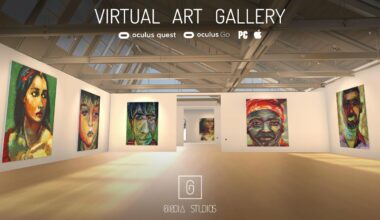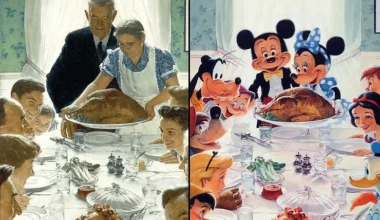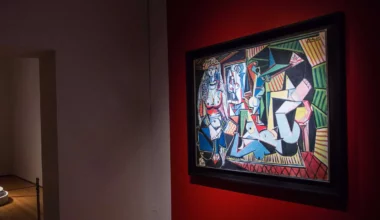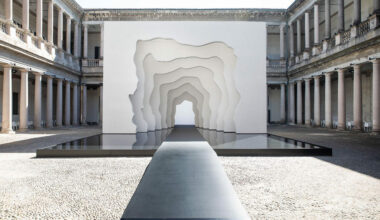Abstract art is a powerful form of expression that taps into the collective imagination and emotions. While many artists employ similar techniques, each brings a distinct style to the genre, creating a diverse and dynamic field of artistic exploration.
Modern abstract artists continue to push the boundaries of this medium. For instance, Cy Twombly is known for his gritty shapes and jagged swaths, reminiscent of torn posters on subway walls, alongside soft scrawls that evoke graffiti tags.
Abstract art beautifully captures the complexity of natural landscapes through large areas of color, organic shapes, and amorphous figures. Artists like David Reed use gestural brushwork to suggest rolling clouds over western landscapes, while Gerhard Richter creates paintings that mimic photographs, with translucent colors and modulated shading that resemble photographic effects.
In this article, we’ll take an in-depth look at some of today’s top abstract painters, exploring their unique artistic styles and the stories behind their success.
1. Albert Contreras
Albert Contreras uses mass-produced, trowel-like tools to apply thick layers of paint—a technique inspired by his experience resurfacing roads for the city of Santa Monica in the 1960s and again from 1997 onwards. Although he began painting during this period, he took a 25-year hiatus before resuming his art practice.
2. Frantisek Kupka
Frantisek Kupka started his career as an illustrator and cartoonist before moving towards abstraction. Though he never aligned himself with any particular movement, his Disks of Newton and other curvilinear works are considered early examples of Orphism, an art movement focused on the lyrical use of color. Kupka often incorporated elements from the Puteaux Group in his pieces.
3. Mark Grotjahn
Mark Grotjahn blends conceptual practices with painterly techniques, using vibrant palettes, minimalist sculpture forms, and precise graphic design. His works, both figurative and abstract, are highly emotive and challenge traditional artistic conventions. His Butterfly paintings evoke natural phenomena while exploring the core principles of abstraction. Grotjahn’s Masks and Circus series engage with figuration, while his Untitled painting’s symmetrical, monochrome radial bands highlight his meticulous attention to spatial relationships and the expressive potential of mark-making.
4. Anselm Kiefer
Anselm Kiefer is an internationally acclaimed artist known for his work in painting, sculpture, and installation. He uses unconventional materials like straw, ash, and lead to imbue his pieces with symbolic meaning, drawing inspiration from sources such as Jewish mysticism and Kabbalah teachings.
5. Gerhard Richter
Gerhard Richter is one of the most revered contemporary artists, with a career spanning more than fifty years. His style constantly evolves, from photorealistic paintings to abstract works. Richter is known for using an extended squeegee to blend colors with precision and creating blurred effects with passages of white.
6. Katharina Grosse
Katharina Grosse is renowned for her expansive, site-related paintings that transcend traditional two-dimensional canvases. Her spray-painted works, such as Rockaway (2016, Baltimore Museum of Art), transform entire buildings and landscapes into immersive art pieces. Grosse’s use of an industrial paint sprayer to apply prismatic swaths of color blurs the lines between painting, architecture, and landscape, creating interconnected suites of works that span canvases and cast-metal sculptures.
7. Sean Scully
Sean Scully’s paintings are poetic narratives, each telling a personal story. He embraced Minimalism during its peak while infusing his art with expression and color. Scully’s Wall of Light series, along with his relief sculptures, combine formal reduction with painterly poesy, creating works that resonate emotionally while paying homage to European painting traditions.
8. Bridget Riley
Bridget Riley draws from a wide range of influences in her geometric patterned paintings. Influenced by artists like Georges Seurat and Victor Vasarely, Riley creates optical sensations that engage viewers. Her work is also inspired by Old Master painters and modern movements such as Futurism, Synchronism, Vorticism, and Orphism, which collectively define 20th-century art.
9. Julie Mehretu
Julie Mehretu is a leading abstract painter of her generation, known for her large-scale paintings that feature interwoven layers of lines and shapes. Her complex compositions reflect the contemporary world, exploring human relationships and the sociopolitical forces that shape them. Mehretu often incorporates architectural features into her work, as seen in her Mogamma series, which was inspired by global uprisings and revolutions like the Arab Spring.
10. Imi Knoebel
Imi Knoebel is celebrated for his minimalist and abstract compositions that explore form, color, space, and materiality. A student of Joseph Beuys at Kunstakademie Düsseldorf, Knoebel helped establish Germany’s Minimalist movement post-World War II. His work, influenced by Russian Suprematist artists like Kazimir Malevich and Piet Mondrian, includes paintings, sculptures, drawings, and light projections that challenge and redefine the boundaries of painting.
Each of these artists has made a significant impact on the world of abstract art, pushing the limits of the medium and continuing to inspire with their unique approaches and innovative techniques.







